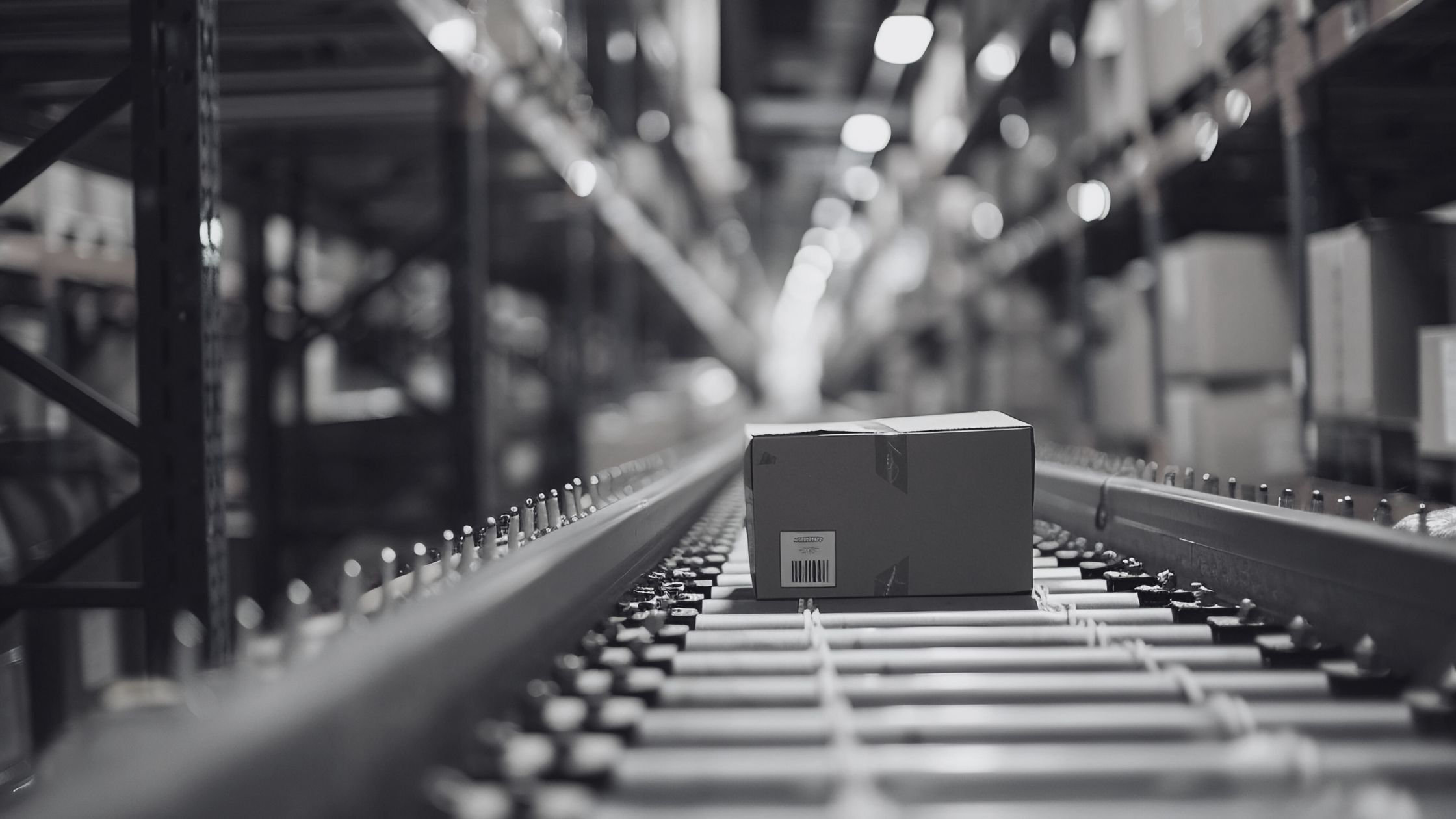The new certainty is uncertainty. Many retail customers contacted their suppliers during January 2025 in anticipation of the tariffs to order more stock. This was a risk to order large quantities before anyone knew what exactly would happen, but for some retailers this strategy has worked in their favor. However, even those who anticipated the introduction in tariffs are only delaying the impact and hoping the situation goes away before stock runs out.
From May 14, US and China will reduce their respective tariffs for 90 days by 115% each – bringing US tariffs on China down to 30% and China’s tariffs on the US down to 10%.
All information accurate as of May 14.
Retailers now need to take stock, look at their supply chain, and consider what to do next. We’d love to say there is an easy solution, but there isn’t. Instead, tough calls will need to be made and careful strategy may be the least bad option.
“With supply chains, complex manufacturing processes, custom tooling and negotiated contracts all in place for year (if not decades), this is not just a matter of lift and shift. So what are the levers retailers can pull in light of the short term? Quite simple. Play with time, negotiate (hard) with vendors and spread the costs.”
Sam Amrani, CEO & Founder at pass_by.
What’s different about these tariffs?
The tariffs introduced by the Trump adminstration this year are different to tariffs that have come before. The tariffs apply to almost every nation in the world, starting from 10% to over 145% for Chinese imports.
This means suppliers and retailers have little leeway to adjust supply chains to avoid hitting the worst of the tariffs as no matter where they look the tariffs are there in some form.
Haven’t tariffs been used before in the States?
It’s not the first time U.S presidents have introduced tariffs on imports and they’ve impacted supply chains. Usually, tariffs target an industry and imports to protect domestic manufactorers from competitive goods from overseas.
While many will point to the tariffs introduced by President Trump in 2018 on imported aluminum, solar panels, and certain home appliances and Former President Biden’s tariffs on steel, EV production, and renewable energy, one of the best examples to look at is a bit older.
In 1983, President Reagan imposed a tariff of 45% on imported motorcycles as a protectionist policy to defend domestic motorcycle manufactoring.
The tariffs led to negotations between the States and the Japanese government, however no agreement was reached. After five years, 1987, Harley-Davidson’s chairman and CEO reached out to President Reagan and asked him to remove the tariff as they “no longer needed tariffs to compete”.
When tariffs are used carefully hand-in-hand with domestic businesses and as long as retailers and suppliers are certain of what they mean, tariffs aren’t always a nightmare to navigate.
Tariffs have been used before in the U.S and by other countries for reasons like these. However, the tariffs are different this time if only for the amount and the wide scope, which is already having a big impact on suppliers. Unlike the motorcycle tariff, retailers can’t be sure these tariffs will be phased out or when.
The only option, then, is to adjust accordingly.
What should retailers stock up on and when?
We know from March 23, consumers were stockpiling goods—particularly apparel (+4.78%), footwear (+4.03%), and liquor (+5.49%)—amid fears of rising prices. Clothing visits jumped by 6.20%, shoe stores grew by 4.36%, and superstores rose by 4.27%, suggesting that shoppers were concerned about pending duty increases on apparel, footwear, and everyday household items.
Consumers will shift over time as the situation unfolds. Keeping an eye on your sales and store visits can help anticipate these changes, but industry-wide data on consumer behavior during the tariffs may be more helpful to see these larger trends and adjust your strategy and stock.
We’re releasing live data to help retailers make these choices. Sign up to our weekly newsletter so you don’t miss out on its release.
What will the tariffs do to supply chains?
In tariffs introduced by President Trump in 2025 will likely disrupt global supply chains on a level never seen before. This will likely lead to increased costs and potentially cause product shortages and delayed shipments. Disruptions will likely be caused by transporation costs increases, stockpiling, demand and supply changes, and uncertainty.
The imposition of tariffs can have a ripple effect throughout the supply chain, influencing everything from production costs to consumer prices. Tariffs, essentially a tax on imports, can lead to several significant changes in how supply chains operate.
Some likely scenarios that are already playing out are:
Increased product prices
To offset increased costs, retailers will pass these costs onto the consumer. Sony has increased raised the recommended retail price (RRP) of the PlayStation 5 console in select markets in Europe, Middle East and Africa (EMEA), Australia and New Zealand.
This could be an attempt from Sony “to protect its key US market from price increases,” Euronews reported.
Big shifts in supply and demand
While many retailers have stocked up, these supplies won’t last forever. Retailers may order in new stock, expecting tariffs to increase or stay, or not order some products at all once the tariffs are in place. Alternatively, retailers may look to alternative suppliers to fill the gap and previously underused suppliers and chains may see an increase in demand that is difficult to keep up with.
Ultimately, the decision on inventory stock levels involves a careful balance between opportunity and risk. By overstocking, businesses run the risk of holding obsolete inventory if consumer preferences shift, or if the tariffs are revoked or adjusted unexpectedly. Yet, having too little on hand can result in lost sales and dissatisfied customers, especially if supply chains become disrupted.
Rerouted sourcing strategies
Companies may shift their sourcing strategies, opting to source materials from countries not subject to high tariffs. This could mean identifying new suppliers, negotiating different terms, and sometimes accepting longer lead times—all factors that require agility and strategic planning.
Inventory management adjustments
Businesses might adjust their inventory levels to buffer against potential disruptions or cost hikes. This could involve stocking up on items before tariffs take effect or maintaining a leaner inventory to reduce costs—each approach requiring careful planning and forecasting.
Investment in domestic manufacturing
In an effort to avoid tariffs, some companies might increase their investment in domestic manufacturing. This shift not only impacts the supply chain logistics but also may encourage the growth of local industries and innovation within the country. However, it also demands capital investment and time for infrastructure development. If that manufacturing isn’t at the level needed already for demand, then this will still cause delays even if supply chains are adjusted to limit exposure to tariffs.
Compliance and Documentation Increases
With tariffs come the added burden of compliance and documentation as companies need to keep thorough records to ensure they meet all legal requirements. This aspect of supply chain management becomes even more critical, influencing operational efficiency and requiring dedicated resources.
In summary, tariffs can dramatically reshape the landscape for supply chains, prompting businesses to adapt quickly. Understanding these potential impacts can help you strategize effectively to minimize disruptions.
Long term and short term strategies retailers are using for the tariffs
Understanding the long-term and short-term strategies utilized by retailers can provide you with valuable insights into navigating this complex landscape. For many, the challenge becomes how to balance the immediate pressures with future planning.
Short-Term Strategy: Preordering
In the short term, preordering becomes a valuable tactic to mitigate the impact of impending tariffs. By securing orders in advance, you can lock in current prices before tariffs drive costs higher.
This approach requires careful inventory management and demand forecasting to ensure that your stock aligns with future sales needs without overextending storage capacities. Preordering not only cushions against price hikes but also strengthens your position in negotiations with suppliers, as early commitments can translate into beneficial terms.
But preordering can’t solve all your problems. There are storage issues, expriation issues for some products, and production wait times. You may want to double your order of a certain product, like a sweatshirt, but that may not be possible if the production line can’t do it.
Even when you’ve preordered exactly what you want when you want at a good price, this is only a short-term solution that won’t get retailers through the wave of tariffs long-term. It’s best used as a starting point and short-term measure to help you evaluate next steps rather than the only basis moving forward.
Long-Term Strategy: Supplier evaluation and relationship building
Developing a robust supplier relationship is key in a tariff-impacted market. Retailers and manufacturers often revisit their supplier agreements to ensure they receive the most competitive pricing. Building and strengthening relationships with suppliers can lead to better terms, fostering collaboration in overcoming challenges related to tariffs.
Monitoring changes in trade policies and pricing structures becomes vital during this reassessment process. When you actively engage with your suppliers, it opens up a channel for discussing innovative solutions that can aid both parties.
By leveraging these strategic approaches, you position your business not only to navigate current tariff challenges but also to remain resilient in the face of future uncertainties. Whether reshoring or diversifying, each step taken towards a refined supply chain strategy serves to safeguard your business’s stability and growth prospects.
Long-Term Strategy: Reshoring
Looking towards a more stable future, reshoring, or bringing production back to domestic soil, stands as a significant long-term strategy to consider. Reshoring not only minimizes dependency on international suppliers but also reduces exposure to volatile tariff impacts. By investing in local manufacturing capabilities, you foster resilience and gain greater control over your supply chain processes. This approach may initially require substantial investment and adaptation, but it can lead to reduced shipping costs, improved lead times, and enhanced product quality by closely overseeing the production process.
In February the shoemaker Steve Madden announced that it had reduced the percentage of goods it imported from China to 58 from 71 since November. Steve Madden wants to reduce that number even further (to the low 40s) in 2025.
It’s not just Steve Madden. Many retailers are adjusting their strategies long and short term. Read more on what retailers are doing about the tariffs.
What happens next?
What these tariffs will lead to is anyone’s guess. They could be in place at their current rates for years to come, gradually faded out, or used as a stick in future negotiations.
For retailers evaluating their supply chain, all that matters is that whatever happens will disrupt supply chains one way or another. The best thing retailers can do right now is evaluate where they’re at, consider ordering more stock, and reshoring supply chains when needed. What consumers do will help to guide these decisions and the only way to keep your fingers on the pulse of that is through data.
We’re releasing live data to help retailers make these choices. Sign up to our weekly newsletter so you don’t miss out on our data releases.
Supply chain tariff FAQs
What is a tariff in the supply chain?
In supply chains, tariffs function as taxes on imported or exported goods, playing a crucial role in global trade dynamics. Tariffs aim to protect domestic industries by making imported goods more expensive and less competitive compared to locally produced items. Tariffs can increase costs of imported goods, leading to supply chain disruptions.
How will tariffs affect supply chains?
Brian Wenck, CEO of Flat World Global Solutions, a global supply chain management and logistics company, explains, “The tariff activity impacts forecast accuracy, leading companies to pause or cancel orders and beg or plead with vendors.” In short, tariffs affect supply chains by causing disruption and creating uncertainty, causing retailers to overstock, understock, or cancel orders altogether.
What does a tariff do to supply and demand?
A tariff on imports typically makes goods from the affected country less in demand, reducing the value of their currency. This leads to fewer exports. As a result, both imports and exports decrease, reducing trade benefits.





